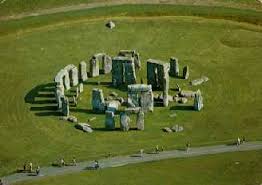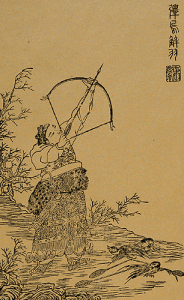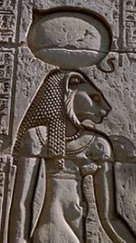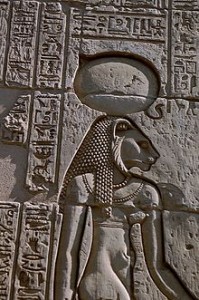 One of the world’s most famous monuments, Stonehenge abounds in mysteries and anomalies.
One of the world’s most famous monuments, Stonehenge abounds in mysteries and anomalies.
Why was Stonehenge built in the first place? Why was it radically transformed shortly before 2500 BC into a masterpiece of megalithic architecture? What explains the intricate, changing patterns of the stones over time? Why the extraordinary effort?
We now have answers to these and other questions, but to get to them we need to set aside preconceptions and come to terms with something that isn’t simple.
Tags: archaeoastronomy, Bronze Age catastrophes, Durrington Walls, eclipses, interpretation of myths, inversions, megalithic, Silbury Hill, Stonehenge, Velikovsky, venus
 If we can interpret certain ancient myths correctly, they could lead us to more accurate and penetrating views of the history of the Earth and the solar system. They might teach us about the forces at work and explain anomalies bequeathed to us by a long-hidden past. But how can we interpret these myths, the products of minds so far removed from ours? How do we know which interpretation is correct, if any? Are we doomed to speculate without ever achieving certainty?
If we can interpret certain ancient myths correctly, they could lead us to more accurate and penetrating views of the history of the Earth and the solar system. They might teach us about the forces at work and explain anomalies bequeathed to us by a long-hidden past. But how can we interpret these myths, the products of minds so far removed from ours? How do we know which interpretation is correct, if any? Are we doomed to speculate without ever achieving certainty?
Here we will interpret two Bronze Age myths to illustrate the high scientific value such myths might contain. We will also see how easy it can be to understand a myth once the right interpretation becomes available.
Tags: Ancient China, Ancient Greece, Bronze Age catastrophes, comets, earth science, history of solar system, interpretation of myths, Jupiter, myths, philosophy of science, planetary science, Velikovsky, venus, Zeus
 In his Worlds in Collision (New York: Macmillan, 1950), Immanuel Velikovsky argued that Venus emerged as a red-hot comet from Jupiter and passed Earth every 52 years, causing the Bronze Age catastrophes, before settling into its current orbit. His claim set off a controversy in which his theory was rejected and stigmatized. But over the years, new findings have changed the picture. Here are eight new reasons to accept a Revised Venus Theory.
In his Worlds in Collision (New York: Macmillan, 1950), Immanuel Velikovsky argued that Venus emerged as a red-hot comet from Jupiter and passed Earth every 52 years, causing the Bronze Age catastrophes, before settling into its current orbit. His claim set off a controversy in which his theory was rejected and stigmatized. But over the years, new findings have changed the picture. Here are eight new reasons to accept a Revised Venus Theory.
Tags: Archer Yi, Athena, Bronze Age catastrophes, catastrophism, earth science, Immanuel Velikovsky, interpretation of myths, Martian Theory of Mass Extinctions, Metis, Outer Solar System Origin of the Terrestrial Planets, planetary science, Poseidon, Revised Venus Theory, The Knowable Past, Theory of the Reversing Earth, tidal theory of the planets, Worlds in Collision
 Worlds in Collision (1950) and Earth in Upheaval (1955) set forth the evidence and arguments for Immanuel Velikovsky’s pioneering, controversial theory that Venus emerged from Jupiter as a comet and repeatedly approached Earth, causing the Bronze Age catastrophes. Kenneth J. Dillon and Stephen J. Dillon discuss these books and the Scientific Rejectionism that stigmatized Velikovsky, thwarting a full, balanced assessment of his theories ever since. See also https://www.scientiapress.com/revised-venus-theory.
Worlds in Collision (1950) and Earth in Upheaval (1955) set forth the evidence and arguments for Immanuel Velikovsky’s pioneering, controversial theory that Venus emerged from Jupiter as a comet and repeatedly approached Earth, causing the Bronze Age catastrophes. Kenneth J. Dillon and Stephen J. Dillon discuss these books and the Scientific Rejectionism that stigmatized Velikovsky, thwarting a full, balanced assessment of his theories ever since. See also https://www.scientiapress.com/revised-venus-theory.
![]() 10-05 ver.3.mp4
10-05 ver.3.mp4
Tags: Bronze Age catastrophes, Earth in Upheaval, earth science, history of science, Immanuel Velikovsky, interpretation of myths, planetary science, scientific rejectionism, the Reversing Earth, Worlds in Collision
 One of the world’s most famous monuments, Stonehenge abounds in mysteries and anomalies.
One of the world’s most famous monuments, Stonehenge abounds in mysteries and anomalies.
 If we can interpret certain ancient myths correctly, they could lead us to more accurate and penetrating views of the history of the Earth and the solar system. They might teach us about the forces at work and explain anomalies bequeathed to us by a long-hidden past. But how can we interpret these myths, the products of minds so far removed from ours? How do we know which interpretation is correct, if any? Are we doomed to speculate without ever achieving certainty?
If we can interpret certain ancient myths correctly, they could lead us to more accurate and penetrating views of the history of the Earth and the solar system. They might teach us about the forces at work and explain anomalies bequeathed to us by a long-hidden past. But how can we interpret these myths, the products of minds so far removed from ours? How do we know which interpretation is correct, if any? Are we doomed to speculate without ever achieving certainty? In his Worlds in Collision (New York: Macmillan, 1950), Immanuel Velikovsky argued that Venus emerged as a red-hot comet from Jupiter and passed Earth every 52 years, causing the Bronze Age catastrophes, before settling into its current orbit. His claim set off a controversy in which his theory was rejected and stigmatized. But over the years, new findings have changed the picture. Here are eight new reasons to accept a Revised Venus Theory.
In his Worlds in Collision (New York: Macmillan, 1950), Immanuel Velikovsky argued that Venus emerged as a red-hot comet from Jupiter and passed Earth every 52 years, causing the Bronze Age catastrophes, before settling into its current orbit. His claim set off a controversy in which his theory was rejected and stigmatized. But over the years, new findings have changed the picture. Here are eight new reasons to accept a Revised Venus Theory. Worlds in Collision (1950) and Earth in Upheaval (1955) set forth the evidence and arguments for Immanuel Velikovsky’s pioneering, controversial theory that Venus emerged from Jupiter as a comet and repeatedly approached Earth, causing the Bronze Age catastrophes. Kenneth J. Dillon and Stephen J. Dillon discuss these books and the Scientific Rejectionism that stigmatized Velikovsky, thwarting a full, balanced assessment of his theories ever since. See also https://www.scientiapress.com/revised-venus-theory.
Worlds in Collision (1950) and Earth in Upheaval (1955) set forth the evidence and arguments for Immanuel Velikovsky’s pioneering, controversial theory that Venus emerged from Jupiter as a comet and repeatedly approached Earth, causing the Bronze Age catastrophes. Kenneth J. Dillon and Stephen J. Dillon discuss these books and the Scientific Rejectionism that stigmatized Velikovsky, thwarting a full, balanced assessment of his theories ever since. See also https://www.scientiapress.com/revised-venus-theory.